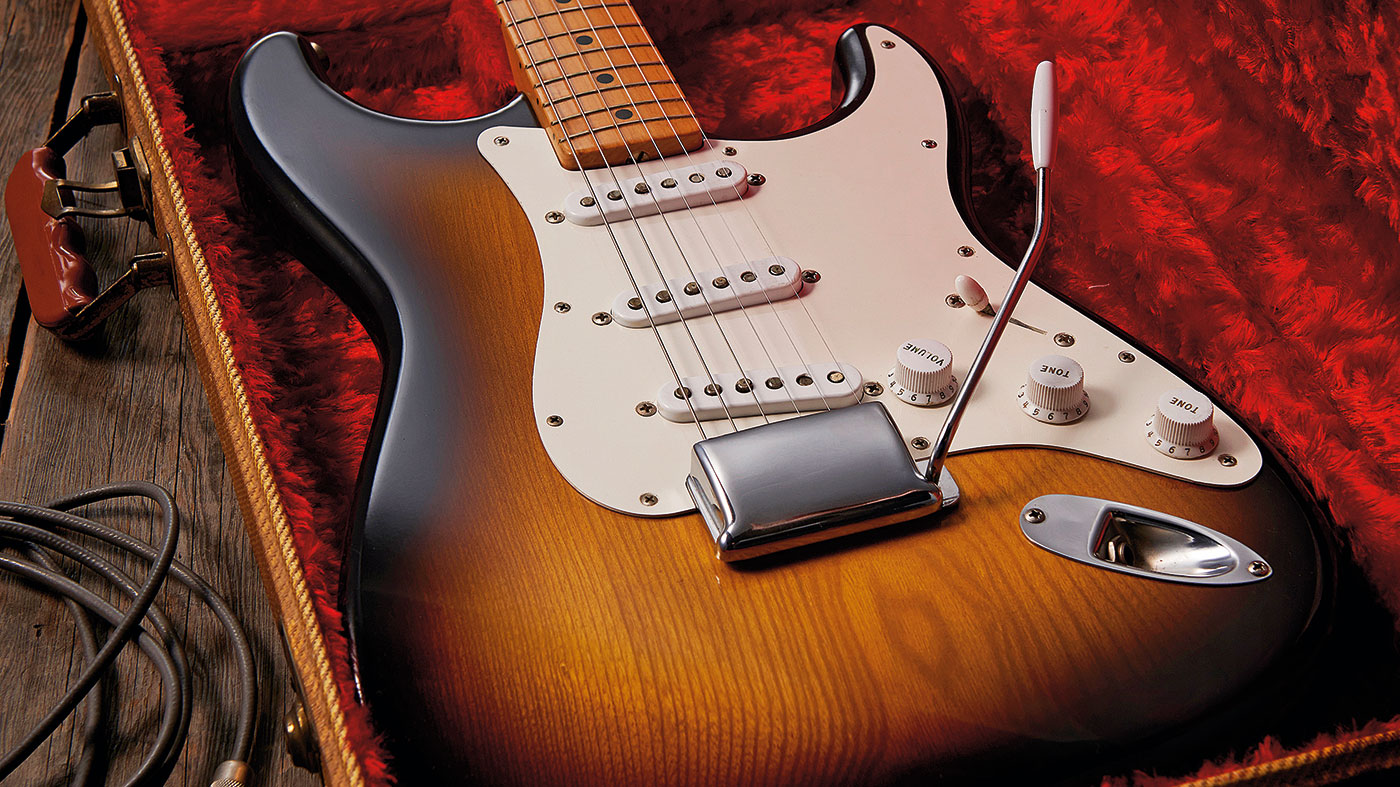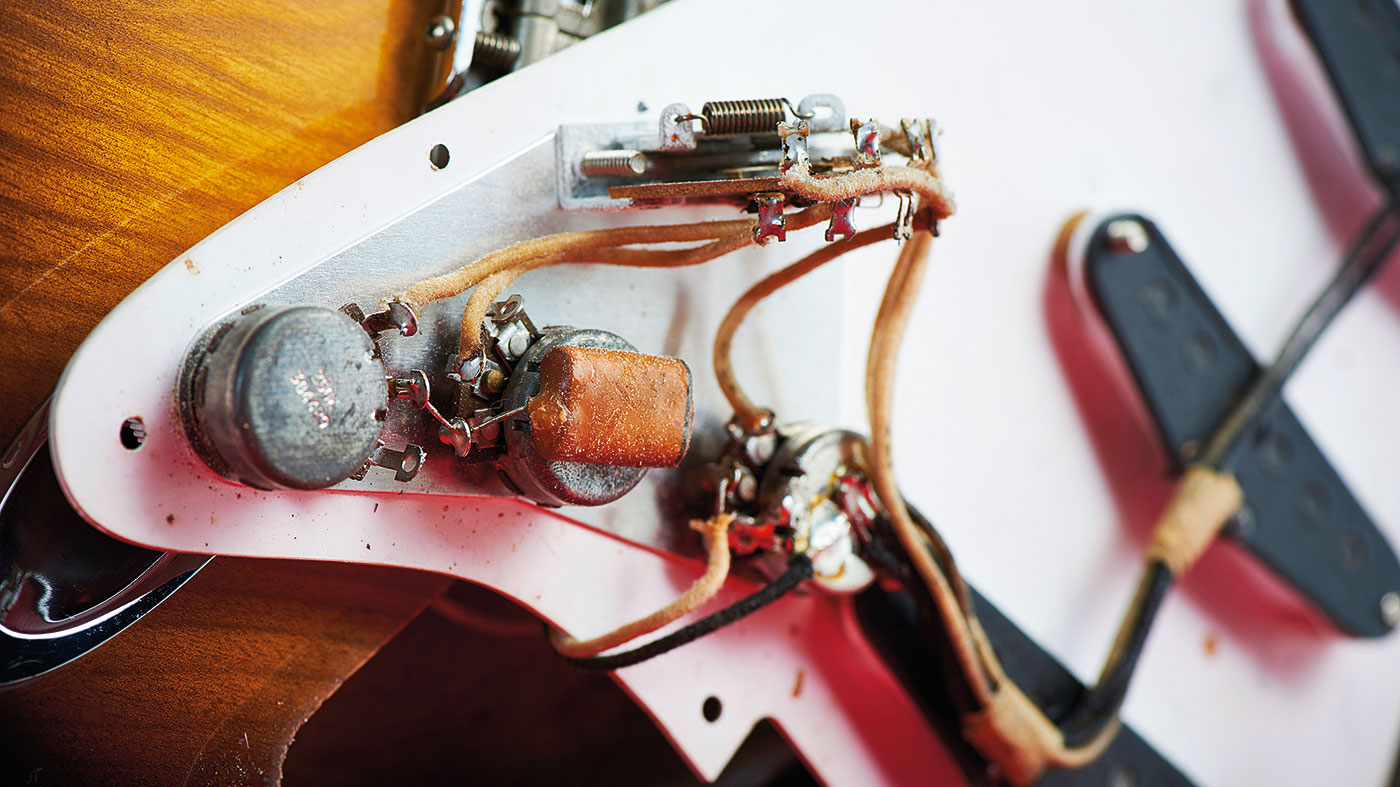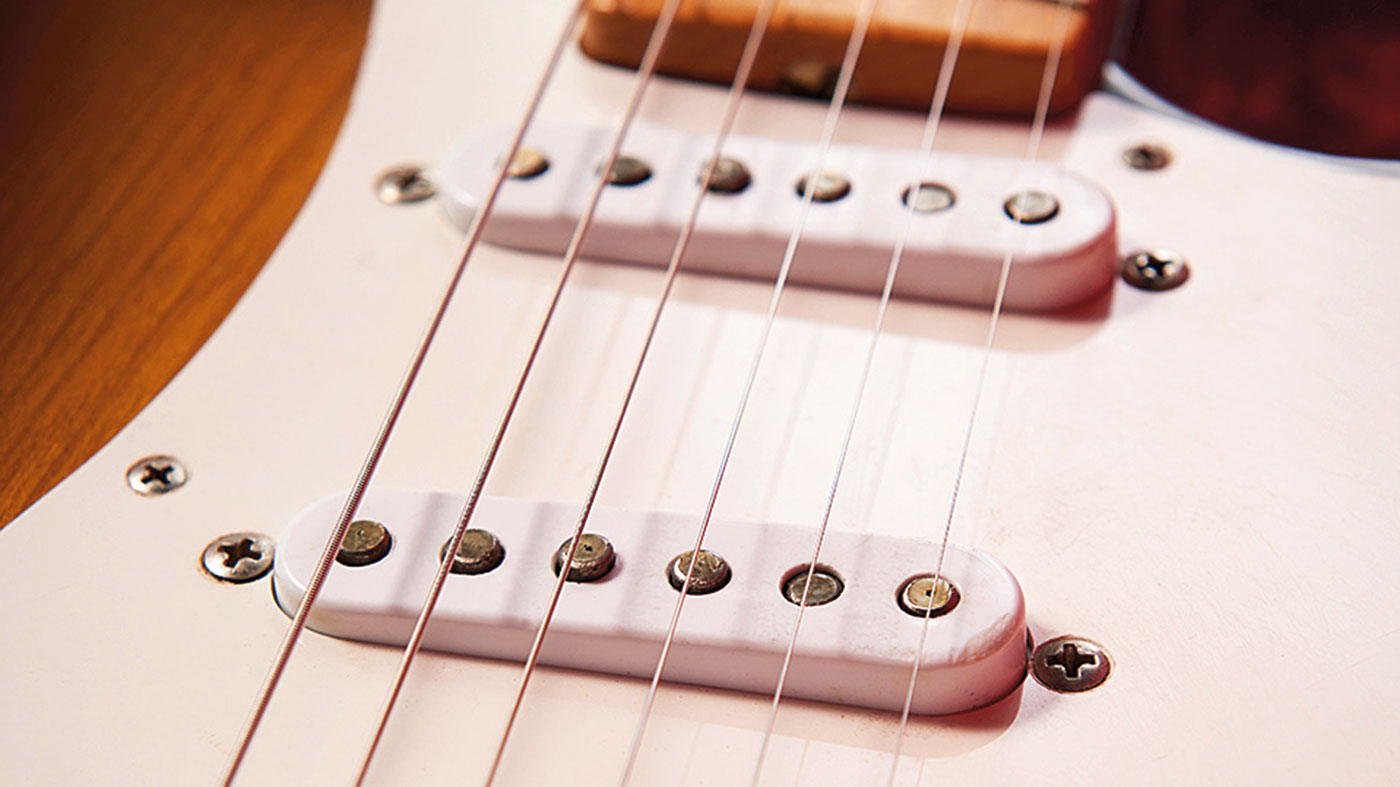
In the first of a new series of features on pickup design, we take an in-depth look at the original 1954 ‘black bottom’ Stratocaster pickup…
In the early 1950s, Fender’s Telecaster/Esquire and Gibson’s Les Paul Model were competing directly in the fledgling solidbody electric guitar market. Fender, being acutely aware of how Gibson’s ornate Goldtop made the humble Tele seem rather modest in appearance, decided to up their game in 1954 by releasing a sleek, curvaceous, futuristic-looking and feature-packed solidbody electric guitar: the Stratocaster.
The Strat voiced a wide range of tonal options and successfully accomplished Leo’s goal of finding favour across a broad spectrum
Taking heed from the suggestions of local Californian guitarist Bill Carson, Leo Fender decided to add a third/middle pickup to the Strat’s design to complement the tried and tested dual format of neck and angled bridge positions.
Loaded with three identical single coil pickups, three-way pickup selector switch, master volume control and separate tone controls (for both the middle and neck pickups), the Strat voiced an impressively wide range of tonal options and successfully accomplished Leo’s goal of finding favour across a broad spectrum of guitar styles at the time, including blues, country, rockabilly, rock ’n’ roll and pop.

Simply Incredible
In typical Leo Fender fashion, the original 1954 Strat pickup was an ingeniously simple yet highly effective design. It consisted of a flat, black vulcanised fibre bottom and top plate held together via tension with six sandcast hand-bevelled alnico magnet slugs, fitted into each corresponding hole, around which a coil of 42-gauge formvar wire was wound by hand. White (hot) and black (ground) cloth wires were then soldered on before the whole assembly was potted in hot wax to minimise feedback and overly microphonic tendencies.
Vintage Stratocaster pickups are often referred to as either ‘black bottom’ or ‘grey bottom’ due to their bottom plate colouration. Black bottom pickups were the norm during the initial 10 years of Strat production, until they were superseded by the grey bottom type beginning in 1964, as Fender’s CBS acquisition ‘transition years’ commenced.
Vintage Stratocaster pickups are often referred to as either ‘black bottom’ or ‘grey bottom’ due to their bottom plate colouration
Although the height of each pickup could be adjusted using screws on the surface of the scratchplate at either end of the coil (each screw threading into the bottom flat with tension provided by surgical tubing), the relative height of each slug was fixed. To overcome this limitation, Leo had the polepieces staggered into differing lengths. The first black bottom pickups were identifiable by a prominent fourth string slug, with the third string slug rising to a similar level later.
Want all the hottest music and gear news, reviews, deals, features and more, direct to your inbox? Sign up here.
There are many variables that impart certain characteristics and influence the overall sound of a pickup and some are far less calculable than others. Indeed, it is virtually impossible to identify two identical vintage examples, even on the same guitar. All black bottom Strat pickups were handwound, resulting not only in desirably uneven ‘scatter’ winding, but also less coil tension and therefore lower coil capacitance, thus assisting the pickup’s top-end clarity. In addition, when a vintage pickup ages the magnetism tends to decrease, rounding out the top end and marginally improving string sustain.

After 10 years the formvar wire was changed to enamel. DC resistance tended to increase over the years from around 5.8 kilo-ohms in 1954 to 6.4 kilo-ohms in 1963, with an average of around 6.1 kilo-ohms and 8,114 turns during the first 10 years (according to data from Seymour Duncan).
Alnico V magnets characteristically provided more scooped mids and tighter low-end
Initially, the polepieces measured 0.2 inches in diameter, although as time progressed the diameter narrowed - firstly to 0.192 inches, then down again to 0.187 inches - thus focusing the magnetic field and producing a slightly less-rounded tone. The lower strength Alnico III magnets used initally for a short time in 1954 were changed the following year to higher strength Alnico V magnets, which characteristically provided more scooped mids and tighter low-end.
Whereas dating grey bottom Strat pickups is normally a case of reading a date format (either handwritten or stamped), black bottom Strat pickups tend to display no such information and therefore require dating by spec details.
Guitarist is the longest established UK guitar magazine, offering gear reviews, artist interviews, techniques lessons and loads more, in print, on tablet and on smartphones Digital: http://bit.ly/GuitaristiOS If you love guitars, you'll love Guitarist. Find us in print, on Newsstand for iPad, iPhone and other digital readers


